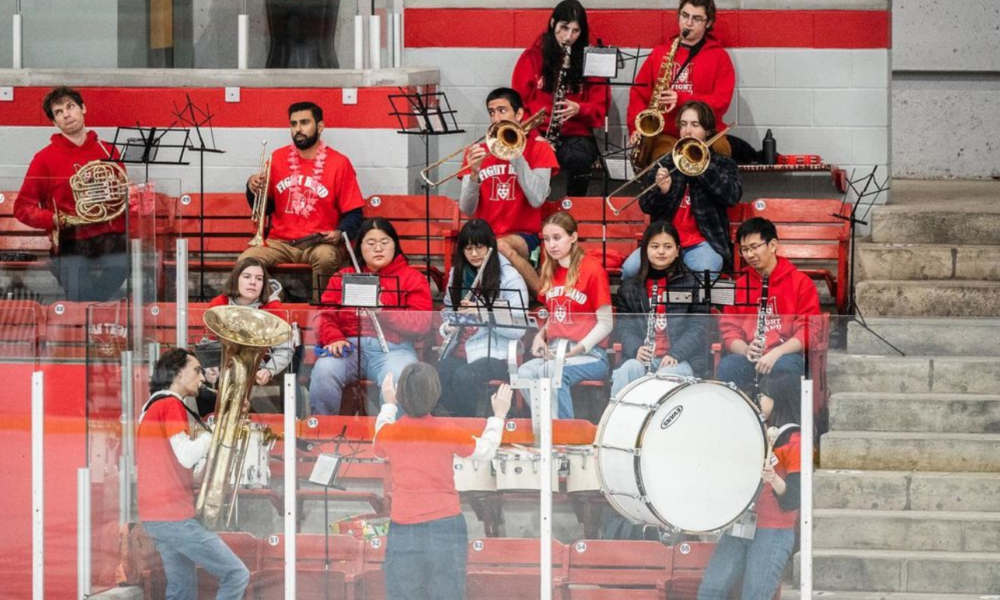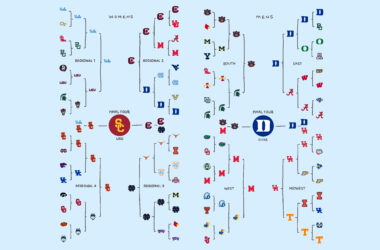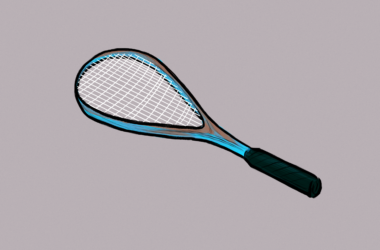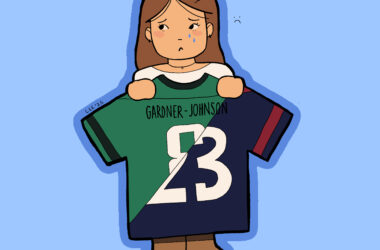Music at sporting events has the remarkable ability to intensify each twist and turn of a game, create a gripping narrative, and even sway the outcome in one team’s favour.
Some might say this is best evidenced by the opening scene of High School Musical 3, where Troy Bolton (Zac Efron) plays his final basketball game at East High School. With just 16 minutes left on the clock, the high-energy Wildcats weave through the defence singing, “this is the last time to get it right / this is the last chance to make it our night,” while the crowd claps along. When Troy is shoved to the ground by the rival team, the encouraging words sung to him by Gabriella Montez (Vanessa Hudgens) motivate Troy to get his head back in the game and lead the Wildcats to victory.
Although McGill’s varsity sporting events sadly lack East High’s spontaneous musical outbursts, the music played at games serves the same purpose: It fosters team spirit and energizes athletes to perform their best. At the same time, music creates a thrilling atmosphere for the audience, making for an entertaining game.
Meeting the musical needs of both the players and the fans is a difficult task that requires attention to detail and careful deliberation. However, McGill Athletics Varsity Sports Official Tommy Schnarr is up to the challenge. The U2 Education student has set the tunes for lacrosse, hockey, basketball, and volleyball games, and his song choice is dependent on what audience the sport draws. For example, the crowd at volleyball games is often made up of newer fans who don’t follow the sport. Because of this, Schnarr plays high-energy pop to keep the atmosphere fun and exciting.
“We go for, like, fast-paced songs with high levels of energy,” Schnarr told The McGill Tribune. “A lot of EDM [electronic dance music] kind of stuff, especially for time-outs, [which are] a lot more intense. In between sets we’ll play “Country Roads,” kind of thing, but to get the crowd nice and into [the game].”
The influence of hockey culture
In contrast to volleyball, there is a far more pronounced hockey culture in North America, given the sport’s popularity. One important part of this shared tradition is classic rock from the 1980s and 1990s featuring artists such as AC/DC and Guns N’Roses mixed in with newer rock from the Black Keys and Green Day. Much of what Schnarr plays stems from this culture, a culture he was exposed to through his own experience playing and watching the sport.
Zoe Frantz, a forward on the Martlets hockey team, echoed the role that broader hockey culture in North America has had in shaping the songs played at games throughout her career. The first-year athlete noted that the nostalgia associated with older songs from her childhood makes them especially meaningful.
“These aren’t just songs that your team shares, it’s like, ‘I remember this from my other team, I remember this from when I was a kid,’” Frantz said. “And the same thing with throwback songs [from the 2010s] [….] It’s just this really cool thing where it’s like, ‘this song has been such a big part of my life and I didn’t consider it until now.’”
Adapting to unique preferences
When crafting playlists for games, the Martlets hockey team puts their own spin on the song selection while including tracks that speak to North American hockey culture. Many of their picks rally and energize the team because they hearken back to season highlights. One song played at games is “Jimmy Cooks” by Drake and 21 Savage, which the team bonded over before their match against Carleton University on Nov. 4.
“I don’t like saying, […] ‘vibes,’ but it had really good vibes,” Frantz said with a laugh. “Everyone was [really] into it and you could feel the room wasn’t tense or stressed, it was more just like, ‘okay, we got this.’”
Schnarr explained that part of catering to audience preferences means carefully observing the crowd’s reactions to music throughout the game and modifying the playlist to adjust to their taste.
“If I see someone not [liking] Ozzy Osbourne for instance, you know, I’ll look at them when I play a Taylor Swift song in the next stoppage, see what they like there,” Schnarr said. “If people are moving a little bit, that’s a good sign. If they’re standing still or ignoring the music, that’s not really what you want.”
Fostering community through popular songs
Being attentive to the audience’s taste is just as important for the McGill Fight Band. The student-run band has been playing live music at varsity games since 2006 and is an integral part of McGill varsity culture. Fight Band incorporates both older and more contemporary music into their repertoire, from “Hey! Baby” by Bruce Channel to “Bad Romance” by Lady Gaga, the latter being one of Fight Band’s hallmark songs. According to Fight Band vice-president Administrative Zachary Roberts, one important feature that shapes the band’s music selection is how recognizable songs are to the audience.
“[The purpose is] to remind the team and the crowd […] it’s not time to give up yet,” Roberts said. “Because people will recognize the song and be like, ‘oh what’s that song, what’s that song?’ And they’ll go, ‘Don’t Stop Believin,’ and they’ll say the word mentally, and in that sense, they’ll be thinking it.”
That same audience recognition works to create an encouraging atmosphere for players, Frantz says. Like Troy and Gabriella exchanging a duet from the court to the stands, enjoying a popular song together can unite the audience and athletes, creating a sense of community and motivating the team to keep pushing for victory.
“It’s cool because you’ve got your team who knows the song, but then you’ve got the audience kind of recognizing the song,” Frantz said. “When you see that everyone’s just kind of enjoying themselves and having a good time […] [it creates a] connection [because] I know you’re there to support me, and we’re connecting on this deeper level, and we all go to McGill, and we’re all just kind of there to have fun.”
Game day music strategy
Music selection varies along with the events of the game itself. Schnarr plays different music depending on how much time is left in the game. In the case of hockey, Schnarr plays more popular songs during the first and second periods to keep the audience engaged, while in the third period, he changes the music in favour of an energetic atmosphere that will benefit the players first and foremost.
“First period and second period, [the players are] still hyped from the music that they have playing in their locker room, from the music that they have in warm-up,” Schnarr explained. “The third period is when they really need that extra boost of energy from the songs that have high beats per minute, so I play a lot of EDM for that.”
As for Fight Band, they base their music on the play happening in the moment. Band President Rosalie Joly-Simard noted that the band will play the theme from Jaws after an opposing hockey team draws a penalty to build anticipation for McGill’s upcoming power play, or will loudly play their instruments to distract a rival basketball player during their free throws.
“Sometimes it works really well, sometimes the players are like, too focused, it doesn’t work.” Joly Simard said. “We give ourselves really good credit when they miss.”
This careful selection of songs is designed to build excitement and keep spirits high. Even when the game is not in McGill’s favour, the band still strives to create a fun atmosphere—in the event of a loss, the band will play “Fuck You” by CeeLo Green.
Thanks to the thoughtful intention that goes into song choice at varsity games, the music at McGill varsity events is far from background noise. Songs can unravel memories of an entire career in the game, foster team bonding, and rally a crowd around a team. The music at games is more than a beat for audiences to clap along to—it’s a tool to uplift athletes, a source of community, and an expression of a love for the sport.









